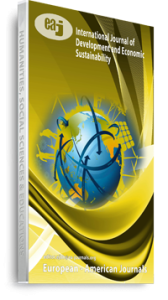Microfinance institutions face a number of dilemmas as they seek to achieve a double bottom line of providing financial services to the poor (outreach) and covering their costs sustainably. Microfinance institutions (MFIs) are therefore a hybrid model but some are also similar to banks because they are regulated and supervised and they mobilize deposits (Counts, 2008). Over the years MFIs have changed dramatically from the initial mission due to increased internal and external pressure to decrease dependence on subsidized or grant funding. Commercialization of microfinance is assumed to be a way of overcoming managerial and efficiency problems, and is thought to promote the large-scale expansion and sustainability. This paper explores the sustainability dilemma in mission drift outcome of commercialization and effect on performance of microfinance institutions. An Explanatory survey was carried out on 351 management staff of the 39 Micro finance Institutions in Kenya. The results of this study inform theory on the extent of application of the double bottom line model by MFIs that critical for achieving sustainability.
Keywords: Mission Drift, Performance of Microfinance Institutions, Sustainability Dilemmas

